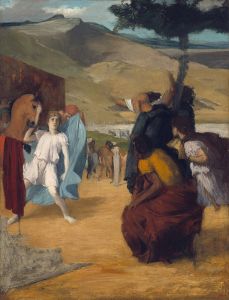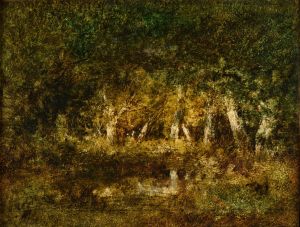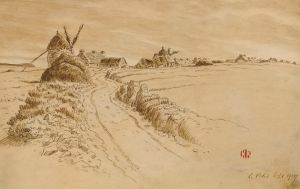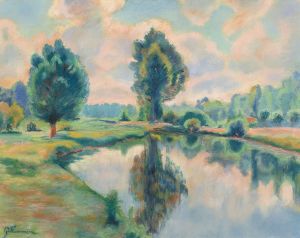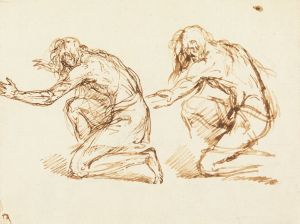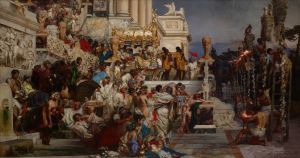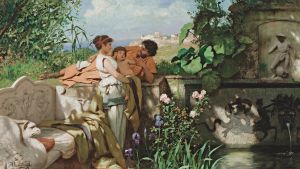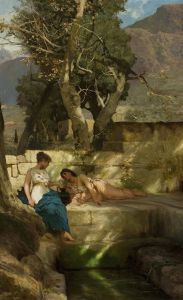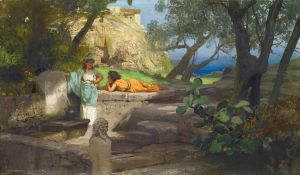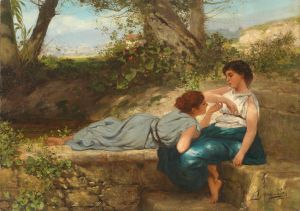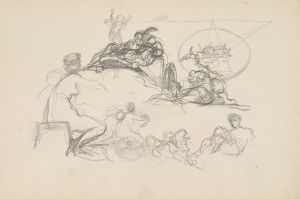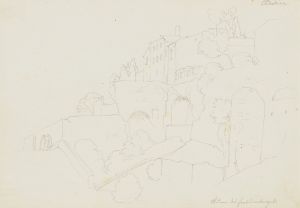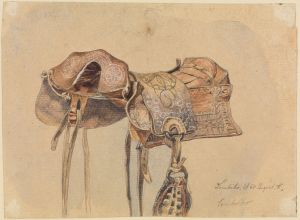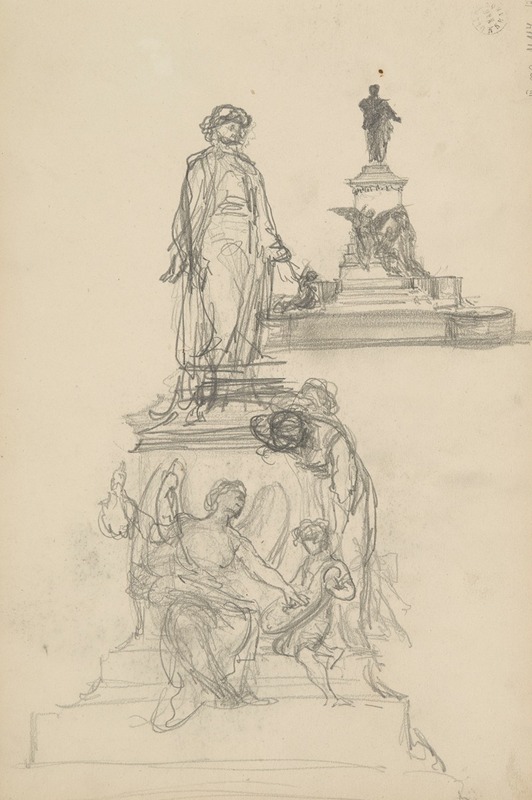
dwa szkice pomnika z postacią na cokole, wokół którego siedzą alegoryczne postacie
A hand-painted replica of Henryk Siemiradzki’s masterpiece dwa szkice pomnika z postacią na cokole, wokół którego siedzą alegoryczne postacie, meticulously crafted by professional artists to capture the true essence of the original. Each piece is created with museum-quality canvas and rare mineral pigments, carefully painted by experienced artists with delicate brushstrokes and rich, layered colors to perfectly recreate the texture of the original artwork. Unlike machine-printed reproductions, this hand-painted version brings the painting to life, infused with the artist’s emotions and skill in every stroke. Whether for personal collection or home decoration, it instantly elevates the artistic atmosphere of any space.
Henryk Siemiradzki was a renowned Polish painter of the 19th century, known for his large-scale historical and mythological scenes. One of his lesser-known works is "Dwa szkice pomnika z postacią na cokole, wokół którego siedzą alegoryczne postacie," which translates to "Two Sketches of a Monument with a Figure on a Pedestal, Surrounded by Allegorical Figures." This piece reflects Siemiradzki's interest in classical themes and his skill in depicting complex compositions.
The artwork consists of two sketches that explore the concept of a monument featuring a central figure on a pedestal, surrounded by allegorical figures. This type of composition was common in the 19th century, as artists and sculptors often used allegorical figures to convey deeper meanings or represent abstract concepts such as justice, wisdom, or valor. Siemiradzki's sketches likely served as preliminary studies for a larger project, possibly a public monument or a decorative piece intended for a specific location.
Siemiradzki was known for his meticulous attention to detail and his ability to infuse his works with a sense of drama and narrative. In these sketches, he would have employed his knowledge of classical art and architecture, drawing inspiration from ancient Roman and Greek traditions. The central figure on the pedestal might represent a historical or mythical personage, while the surrounding allegorical figures could symbolize various virtues or societal ideals.
The sketches demonstrate Siemiradzki's proficiency in composition and his understanding of how to balance multiple elements within a single artwork. His use of allegory would have been intended to engage viewers, encouraging them to interpret the relationships between the figures and the central monument. This approach was typical of the academic art tradition in which Siemiradzki was trained, emphasizing both technical skill and intellectual engagement.
While specific details about the intended purpose or final realization of these sketches are not well-documented, they provide insight into Siemiradzki's artistic process and his approach to monumental art. His ability to convey complex ideas through allegorical representation is evident in these works, reflecting the broader cultural and artistic trends of his time.
Siemiradzki's contribution to the art world extends beyond these sketches, as he was a prominent figure in the Polish and European art scenes. His works were celebrated for their beauty, technical mastery, and the way they captured the spirit of classical antiquity. Although "Dwa szkice pomnika z postacią na cokole, wokół którego siedzą alegoryczne postacie" may not be as widely recognized as some of his other paintings, it remains a testament to his skill and artistic vision.
In summary, Henryk Siemiradzki's sketches of a monument with allegorical figures are a reflection of his interest in classical themes and his ability to create intricate compositions. These works highlight his expertise in combining narrative and allegory, offering a glimpse into his artistic process and the cultural context of his time.





